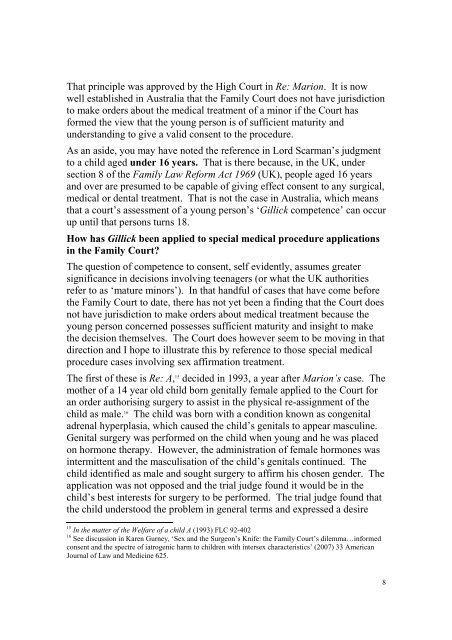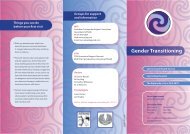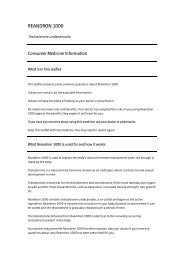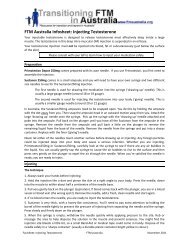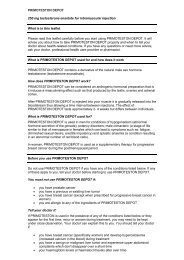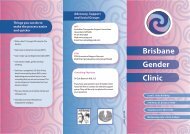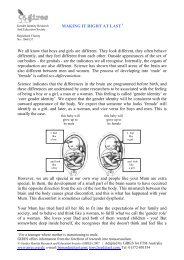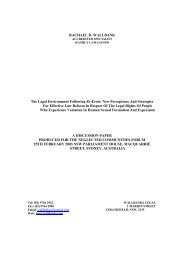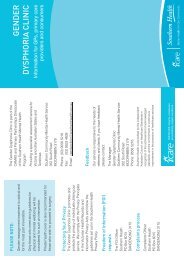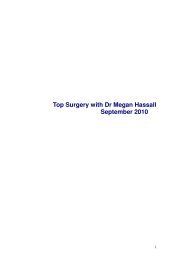It's My Body Isn't It - FTM Australia
It's My Body Isn't It - FTM Australia
It's My Body Isn't It - FTM Australia
Create successful ePaper yourself
Turn your PDF publications into a flip-book with our unique Google optimized e-Paper software.
That principle was approved by the High Court in Re: Marion. <strong>It</strong> is now<br />
well established in <strong>Australia</strong> that the Family Court does not have jurisdiction<br />
to make orders about the medical treatment of a minor if the Court has<br />
formed the view that the young person is of sufficient maturity and<br />
understanding to give a valid consent to the procedure.<br />
As an aside, you may have noted the reference in Lord Scarman’s judgment<br />
to a child aged under 16 years. That is there because, in the UK, under<br />
section 8 of the Family Law Reform Act 1969 (UK), people aged 16 years<br />
and over are presumed to be capable of giving effect consent to any surgical,<br />
medical or dental treatment. That is not the case in <strong>Australia</strong>, which means<br />
that a court’s assessment of a young person’s ‘Gillick competence’ can occur<br />
up until that persons turns 18.<br />
How has Gillick been applied to special medical procedure applications<br />
in the Family Court?<br />
The question of competence to consent, self evidently, assumes greater<br />
significance in decisions involving teenagers (or what the UK authorities<br />
refer to as ‘mature minors’). In that handful of cases that have come before<br />
the Family Court to date, there has not yet been a finding that the Court does<br />
not have jurisdiction to make orders about medical treatment because the<br />
young person concerned possesses sufficient maturity and insight to make<br />
the decision themselves. The Court does however seem to be moving in that<br />
direction and I hope to illustrate this by reference to those special medical<br />
procedure cases involving sex affirmation treatment.<br />
The first of these is Re: A, 15 decided in 1993, a year after Marion’s case. The<br />
mother of a 14 year old child born genitally female applied to the Court for<br />
an order authorising surgery to assist in the physical re-assignment of the<br />
child as male. 16 The child was born with a condition known as congenital<br />
adrenal hyperplasia, which caused the child’s genitals to appear masculine.<br />
Genital surgery was performed on the child when young and he was placed<br />
on hormone therapy. However, the administration of female hormones was<br />
intermittent and the masculisation of the child’s genitals continued. The<br />
child identified as male and sought surgery to affirm his chosen gender. The<br />
application was not opposed and the trial judge found it would be in the<br />
child’s best interests for surgery to be performed. The trial judge found that<br />
the child understood the problem in general terms and expressed a desire<br />
15 In the matter of the Welfare of a child A (1993) FLC 92-402<br />
16 See discussion in Karen Gurney, ‘Sex and the Surgeon’s Knife: the Family Court’s dilemma…informed<br />
consent and the spectre of iatrogenic harm to children with intersex characteristics’ (2007) 33 American<br />
Journal of Law and Medicine 625.<br />
8


